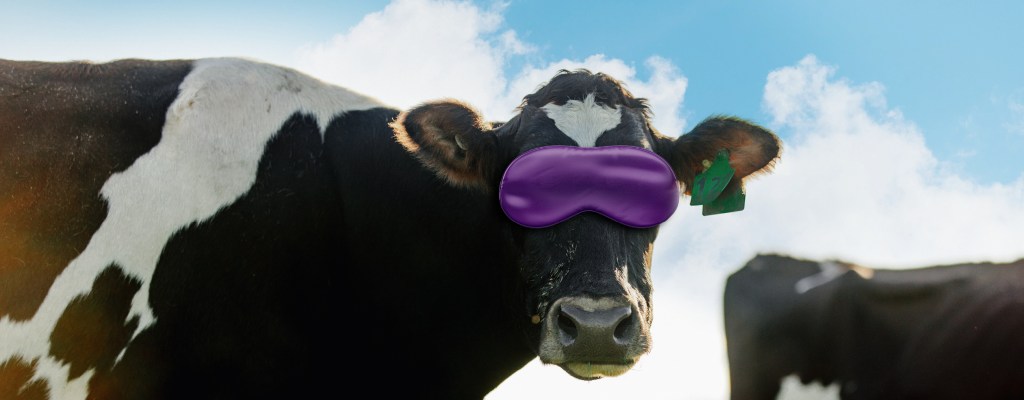
Keep an eye out for pinkeye in cattle.
Pinkeye or infectious bovine keratoconjunctivitis (IBK) is the most common eye condition in cattle, affecting all breeds and any age, with calves being especially vulnerable. Light coloured breeds such as Herefords are more commonly affected1. The main cause of pinkeye is a bacteria called Moraxella bovis.
Although most animals recover, serious cases can lead to permanent blindness. Pinkeye is also economically important to cattle farmers as disease incurs significant costs, including:
- treatments costs
- disruptions to seasonal management of stock
- production losses through reduced growth rates in young animals, and losses of milk production, weight gain, and mating performance in adult animals.
Spread of Pinkeye and Clinical Signs:
Pinkeye usually peaks in spring and summer when environmental conditions are just right – strong sunlight (UV light), combined with anything that can irritate the eye (e.g. dry, dusty, windy conditions, mature stalky vegetation and nuisance flies). Additionally, anything that affects the animal’s immunity like BVD (Bovine Viral Diarrhoea) or Infectious Bovine Rhinotracheitis (IBR) will reduce their ability to fight the infection.
The first signs of disease are weepy eyes. Infected animals become light sensitive and try to avoid bright light and may appear to squint. Blood vessels appear as a red ring on the surface of the eye, while infected animals may have creamy or opaque appearing eyes. As the infection takes hold ulcers can develop.
More recently Moraxella bovoculi 2 has been associated with disease outbreaks in New Zealand. This highlights the need to adhere to sound management practices as these species are not covered by the current vaccine, PILIGUARD® Pinkeye-1 Trivalent in New Zealand.
Treatment:
Once disease starts, it will spread rapidly. Outbreaks can be treated with antibiotics, but this can be expensive, difficult and time consuming. It also requires yarding animals – increasing the spread of disease within the herd. Advanced cases may require surgery.
Prevention by Vaccination:
Piliguard® Pinkeye-1 Trivalent is a one-shot vaccine. It helps develop and maintain immunity in cattle by generating antibodies against Moraxella bovis that help prevent the bacteria attaching to the eye.
Vaccination has a number of advantages over treatment:
- reduces the incidence and severity of disease, reducing individual animal suffering and production losses
- disease is often well advanced before animals are treated, and animals often don’t respond well to treatment
- reduces the need for antibiotics and therefore reduces the risk of bacterial resistance or residues
- can be administered at convenient times (e.g: drenching, calf marking) when animals are being mustered
- reduces the need for yarding cattle in hot, dusty conditions to treat affected animals, thus reducing risk of further spread of pinkeye
The time to vaccinate is 3 – 6 weeks before the onset of the Pinkeye season. Because conditions and animal health requirements vary from farm to farm, we recommend you contact us to discuss a management programme to prevent Pinkeye in your herd.
In the case of an outbreak in the face of vaccination, taking eye swabs for PCR will help confirm if other bacterial species such as Moraxella bovoculi, are contributing to the pinkeye disease seen.
Pinkeye is a painful and extremely unpleasant, highly contagious disease in cattle. The more we can do to prevent and reduce it’s affects the better your animals will perform. Vaccination is not a ‘silver bullet’ and needs to be used in conjunction with other important farm management practices in order to prevent whole herd infection.
For further information please refer to https://www.bovilis.co.nz/piliguard-pinkeye-1-trivalent
- Angelos, J (2015), Infectious bovine keratoconjunctivitis (pinkeye). The Veterinary clinics of North America. Food animal practice Volume: 31 (1): 61-79.
- Angelos, J (2010), ‘Moraxella bovoculi and Infectious Bovine Keratoconjunctivitis: Cause or Coincidence?’, Veterinary Clinics of North America: Food Animal Practice, Vol 26 (1): 73-78.
AVAILABLE ONLY UNDER VETERINARY AUTHORISATION
ACVM No: A008192. Schering-Plough Animal Health Ltd. Phone: 0800 800 543. www.msd-animal-health.co.nz NZ-PIL-230300001 © 2023 Intervet International B.V. All Rights Reserved.

